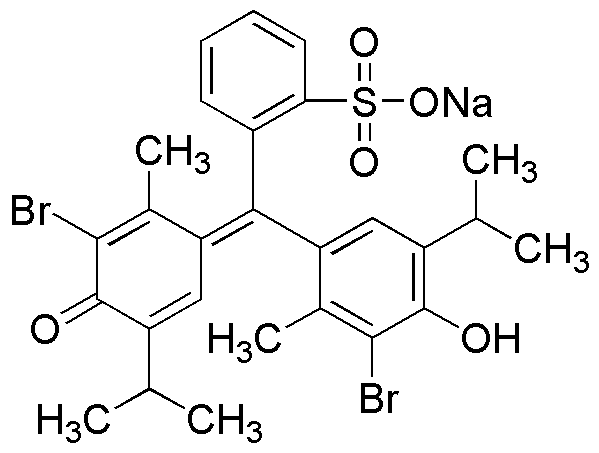Bromothymol blue sodium salt is widely utilized in research focused on:
- pH Indicator: This compound is commonly used in laboratories as a pH indicator due to its clear color change from yellow to blue between pH 6.0 and 7.6, making it ideal for various titrations and biological experiments.
- Cell Culture Applications: In cell biology, it serves as a vital tool for monitoring pH levels in cell culture media, ensuring optimal conditions for cell growth and viability.
- Environmental Testing: It is employed in environmental science to assess the acidity of water samples, helping researchers evaluate the health of aquatic ecosystems.
- Educational Demonstrations: Commonly used in educational settings, it provides a visual demonstration of acid-base reactions, enhancing student understanding of chemistry concepts.
- Pharmaceutical Research: In drug formulation, it assists in determining the pH stability of pharmaceutical products, ensuring their efficacy and safety for consumers.
General Information
Properties
Safety and Regulations
Applications
Bromothymol blue sodium salt is widely utilized in research focused on:
- pH Indicator: This compound is commonly used in laboratories as a pH indicator due to its clear color change from yellow to blue between pH 6.0 and 7.6, making it ideal for various titrations and biological experiments.
- Cell Culture Applications: In cell biology, it serves as a vital tool for monitoring pH levels in cell culture media, ensuring optimal conditions for cell growth and viability.
- Environmental Testing: It is employed in environmental science to assess the acidity of water samples, helping researchers evaluate the health of aquatic ecosystems.
- Educational Demonstrations: Commonly used in educational settings, it provides a visual demonstration of acid-base reactions, enhancing student understanding of chemistry concepts.
- Pharmaceutical Research: In drug formulation, it assists in determining the pH stability of pharmaceutical products, ensuring their efficacy and safety for consumers.
Documents
Safety Data Sheets (SDS)
The SDS provides comprehensive safety information on handling, storage, and disposal of the product.
Product Specification (PS)
The PS provides a comprehensive breakdown of the product’s properties, including chemical composition, physical state, purity, and storage requirements. It also details acceptable quality ranges and the product's intended applications.
Certificates of Analysis (COA)
Search for Certificates of Analysis (COA) by entering the products Lot Number. Lot and Batch Numbers can be found on a product’s label following the words ‘Lot’ or ‘Batch’.
*Catalog Number
*Lot Number
Certificates Of Origin (COO)
This COO confirms the country where the product was manufactured, and also details the materials and components used in it and whether it is derived from natural, synthetic, or other specific sources. This certificate may be required for customs, trade, and regulatory compliance.
*Catalog Number
*Lot Number
Safety Data Sheets (SDS)
The SDS provides comprehensive safety information on handling, storage, and disposal of the product.
DownloadProduct Specification (PS)
The PS provides a comprehensive breakdown of the product’s properties, including chemical composition, physical state, purity, and storage requirements. It also details acceptable quality ranges and the product's intended applications.
DownloadCertificates of Analysis (COA)
Search for Certificates of Analysis (COA) by entering the products Lot Number. Lot and Batch Numbers can be found on a product’s label following the words ‘Lot’ or ‘Batch’.
*Catalog Number
*Lot Number
Certificates Of Origin (COO)
This COO confirms the country where the product was manufactured, and also details the materials and components used in it and whether it is derived from natural, synthetic, or other specific sources. This certificate may be required for customs, trade, and regulatory compliance.


